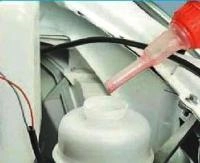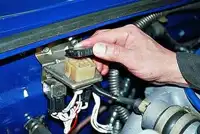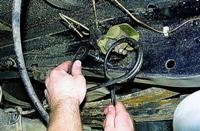It is more convenient to work together
Remove the gearbox. We look at the article - "How to remove and install the gearbox of a Gazelle car".
We wrap the filler and drain plugs in place.
Remove the support of the power unit.
Remove the reverse light switch.
Remove the speedometer drive.
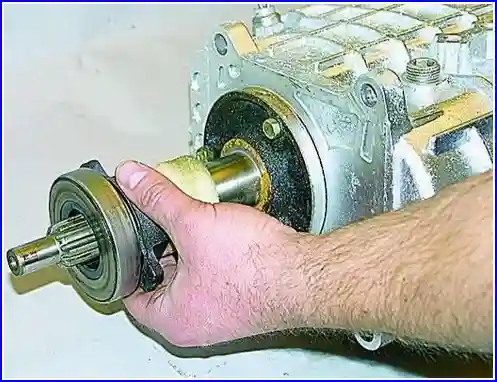
Remove the clutch with the bearing and the foam rings of the front cover.
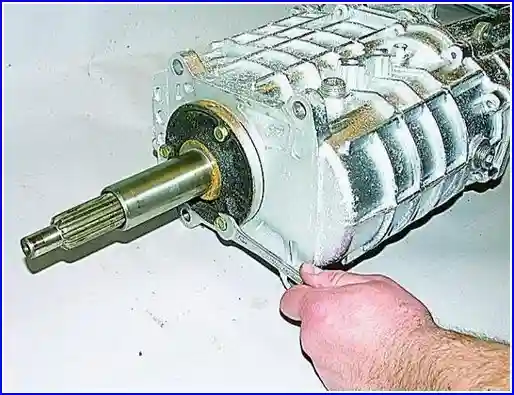
Using the “12” key, we unscrew the three bolts securing the bearing cover (the bolts are installed on the sealant).

Remove the cover with the gasket.
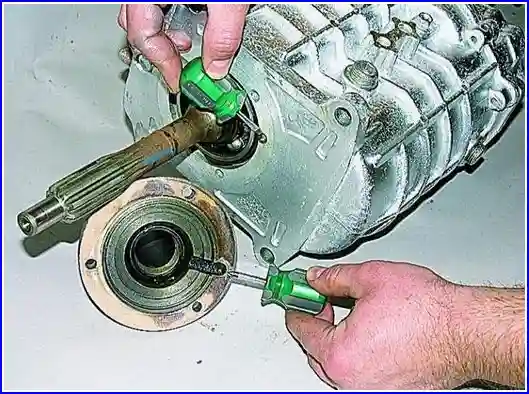
When installing it next, pay attention to the coincidence of the oil drain channel in the cover and the hole in the crankcase.

Having prying with a screwdriver, we remove the cuff of the input shaft from the cover (when disassembling the gearbox, we replace all cuffs, regardless of their condition).
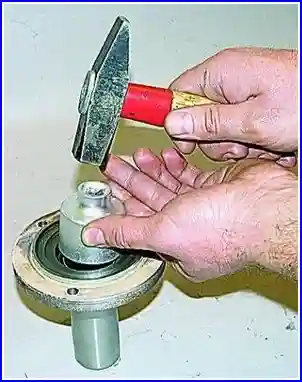
Using a mandrel or a suitable head, we press in a new cuff.
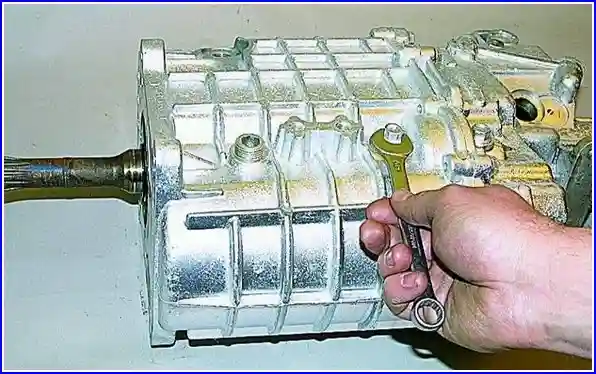
Using the “13” key, unscrew and remove the bolt securing the reverse gear axle bushing to the front crankcase

Use a thin screwdriver to pry and remove the retaining ring of the input shaft bearing

Use the “12” key to turn it off and remove the breather.
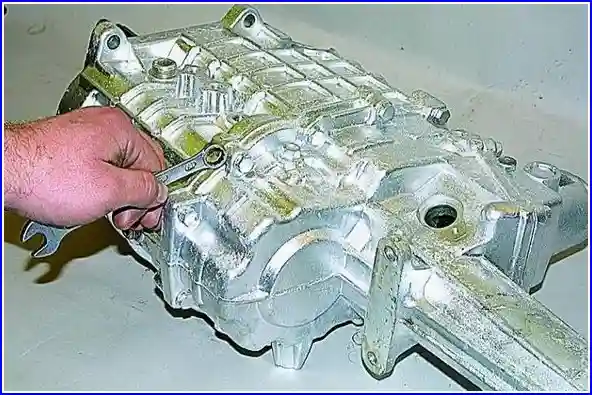
Using the “12” key, we unscrew ten bolts connecting the front and rear crankcases (two bolts passing through the mounting sleeves are longer than the others).

Carefully tapping with a hammer through the brass mandrel, we undock the front and rear crankcases.
In this case, it is impossible to strike the end of the input shaft, as the synchronizers will be damaged.
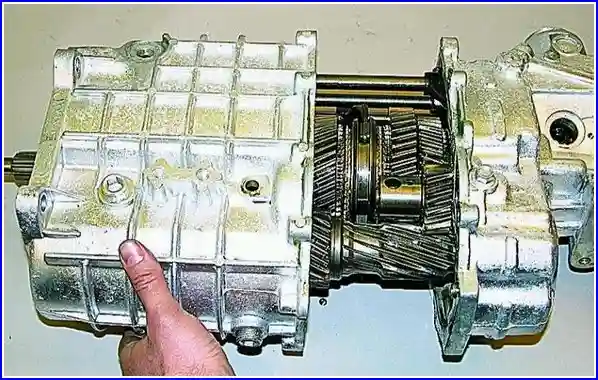
Disconnect the crankcases of the box ptransmission
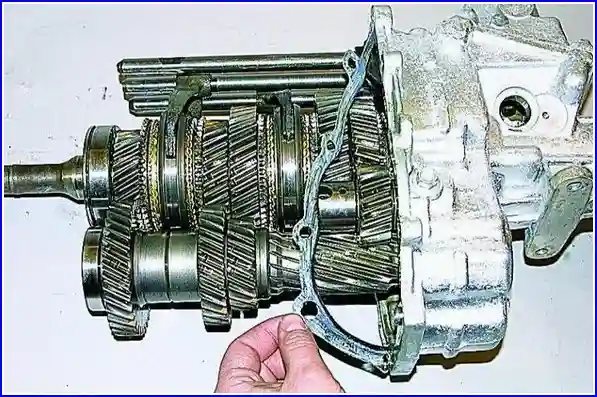
Carefully, trying not to damage, remove the gasket
We take out the shims from the bore for the intermediate shaft bearing in the front crankcase (they may not be there).
In this case, the axial clearance in the bearings is set only by an inter-crankcase seal.

Turning the input shaft, we turn on the reverse gear (we move the rod of the V gear and reverse gear forward).
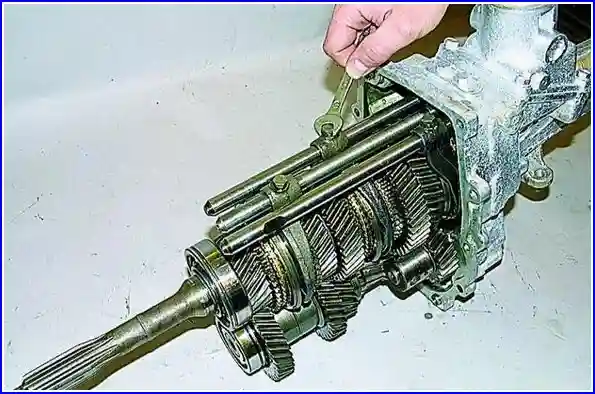
Using the “10” key, we unscrew the bolts securing the three gear shift forks.
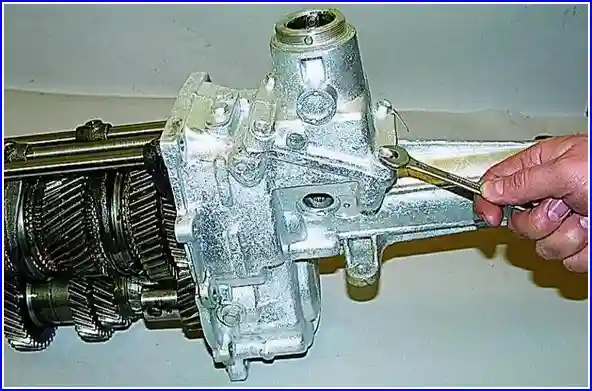
Using the “12” key, we unscrew the four bolts securing the gear lever housing.

Remove the lever housing with the gasket.
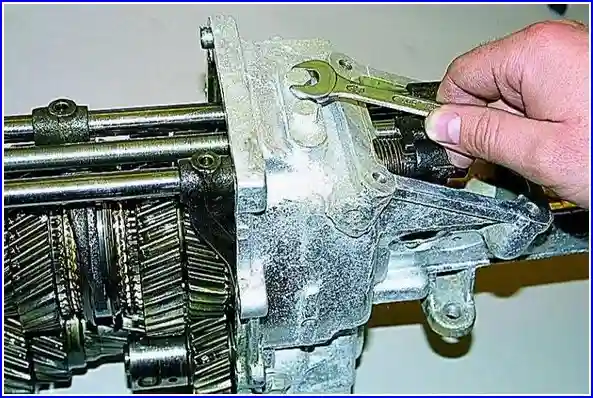
Using the “12” key, we unscrew the bolts securing the plate of the rod retainers.

Remove the plate with the gasket.
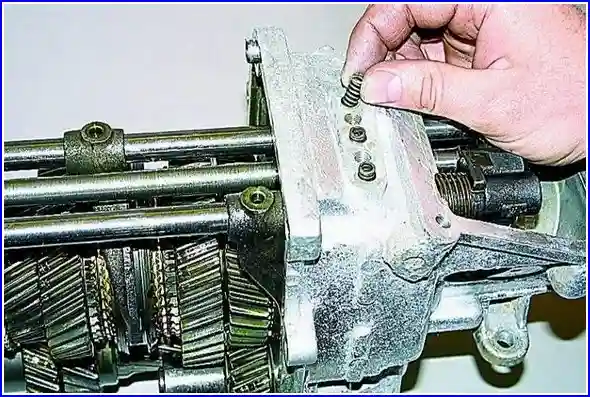
We take out three springs and three balls of gear detents (they can be removed with a magnetized screwdriver or by turning the box over).
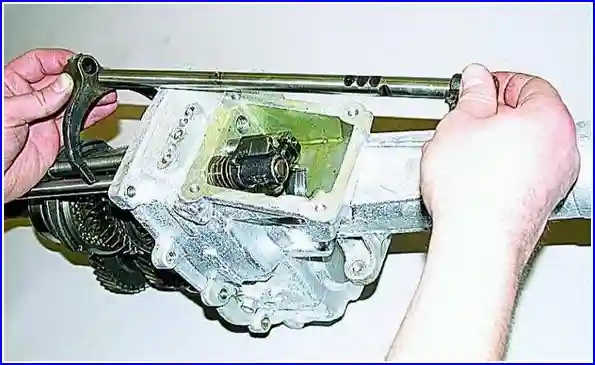
We take out the stem of the I-II gear (in order not to mix it up during assembly, we immediately put the fork on the stem and fasten it with a bolt).
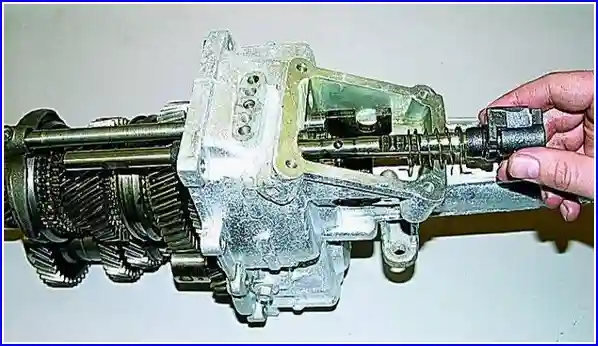
We take out the rod of the V gear and the reverse gear, putting on it the corresponding fork.
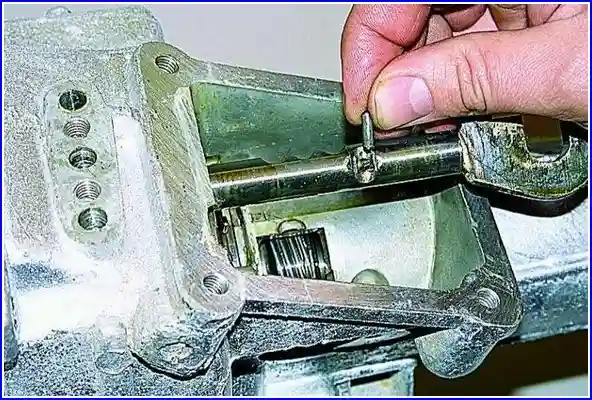
We take out the stem of III-IV gears. We remove the blocker pin from the stem.
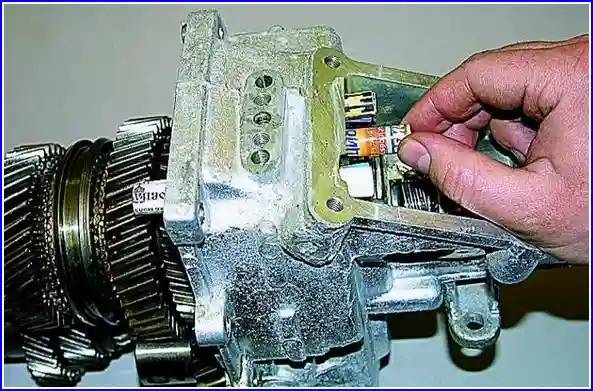
To prevent the blocker plungers from falling out, we insert tubes folded from thick paper into the holes of the rods.
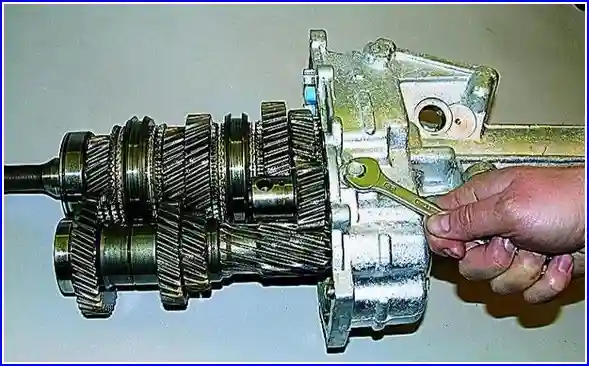
Using the “13” key, we unscrew the bolt securing the reverse gear axle to the rear crankcase.
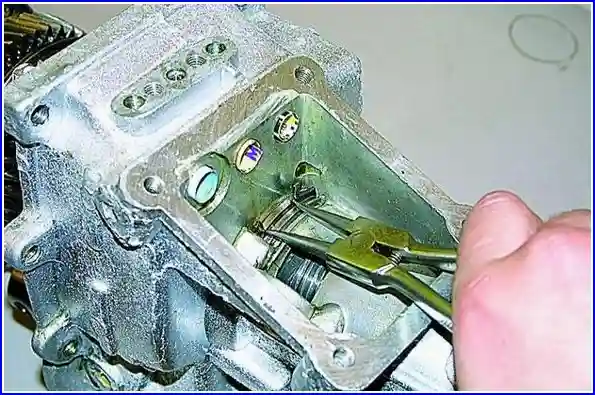
Using tongs, we push apart the antennae of the retaining ring of the rear bearing of the secondary shaft and, tapping with a copper hammer on the rear end of the secondary shaft, we take out the set of shafts together with the axle and the reverse gear
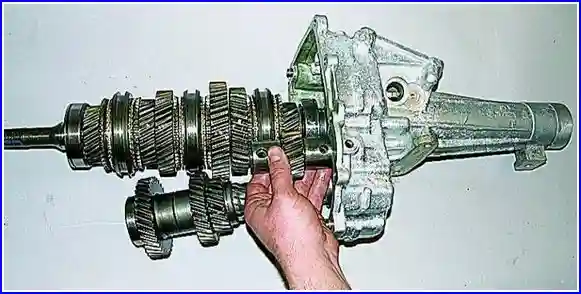
Disconnect the primary and secondary shafts.
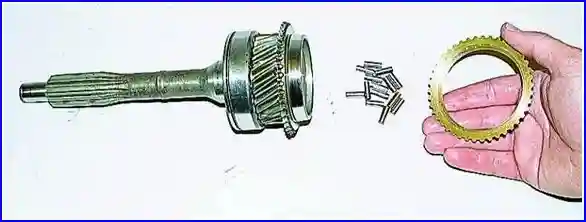
Remove the IV gear synchronizer and take out 14 rollers of the front support of the secondary shaft.
Gears, synchronizers and other parts located on the primary and secondary shafts are similar to each other, therefore, to facilitate subsequent assembly, they should be carefully laid out in the order of removal.

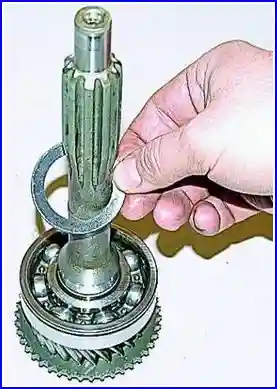
With two thin screwdrivers or special tongs, we open and remove the retaining and spring rings from the input shaft.
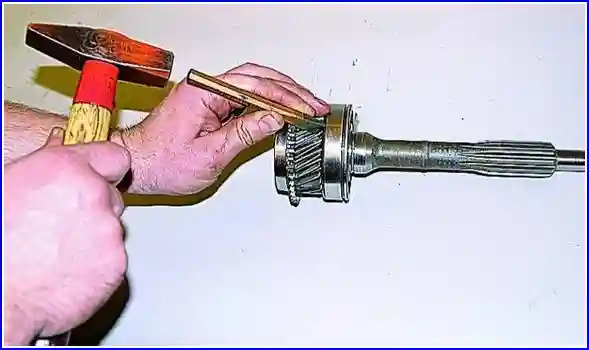
With a beard (two mounting blades or a special puller), we compress the input shaft bearing
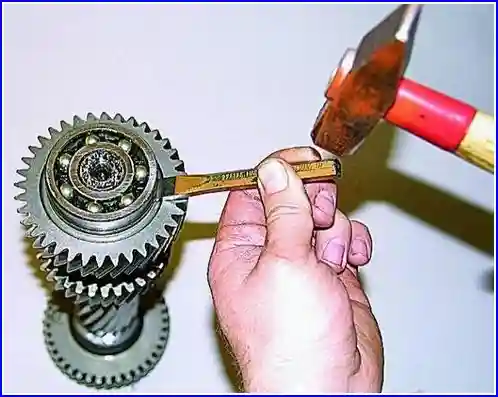
Similarly, remove both intermediate shaft bearings
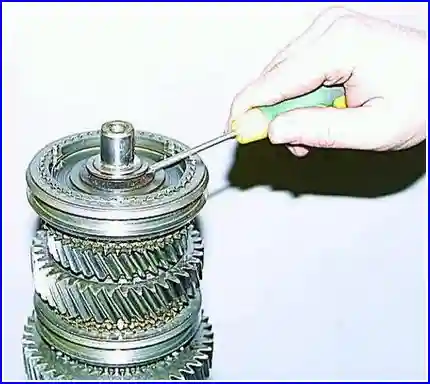
Having installed the output shaft vertically in a vice through soft gaskets, remove the retaining and spring rings of the hub of the III-IV gear clutch
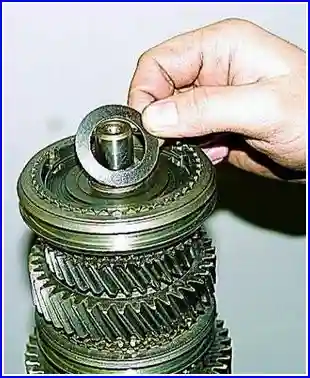
Remove the clutch assembly with crackers and synchronizer springs.

It is better not to disassemble this kit, but if such a need arises, mark the relative position of the parts.
Gear clutches are not symmetrical, so they only fit in one position.
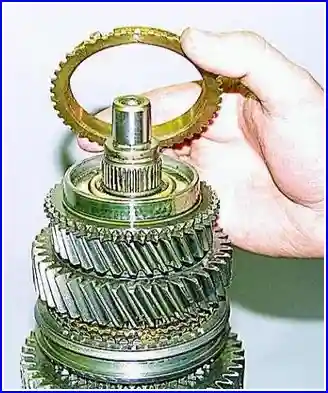
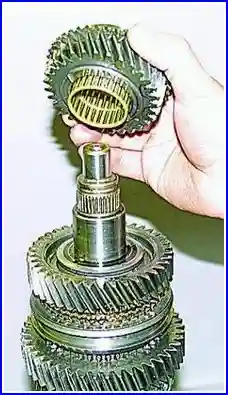
Remove the synchronizer ring and the third gear gear together with the plastic separator and rollers
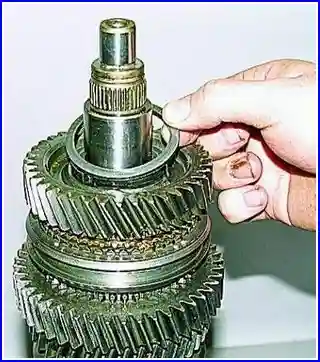
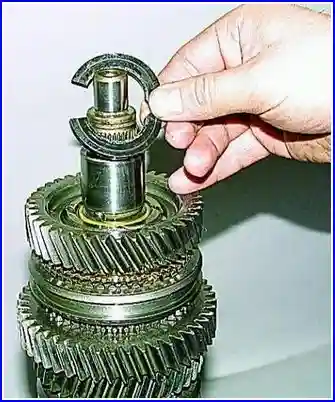
Use a screwdriver to pry off and remove the retaining ring and two thrust half rings.
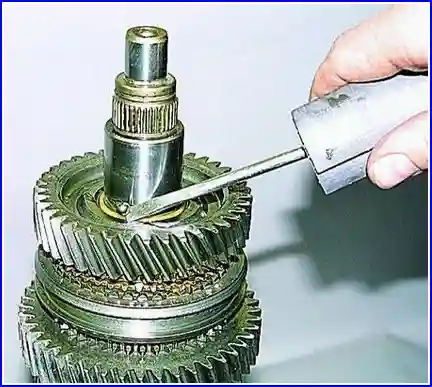
Use a magnetized screwdriver to remove the locking ball of the half rings.

Remove the 2nd gear gear with bearing.

Remove the 2nd gear synchronizer ring.
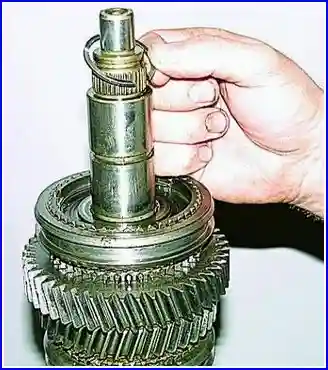
Remove the retaining ring.
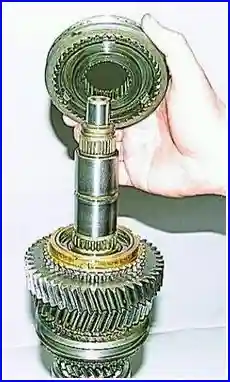
Remove the I-II gear clutch

…and 1st gear synchronizer ring
Remove the 1st gear gear with bearing.

We carry out further disassembly of the secondary shaft from the other end.
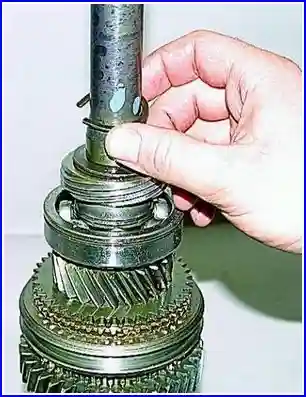
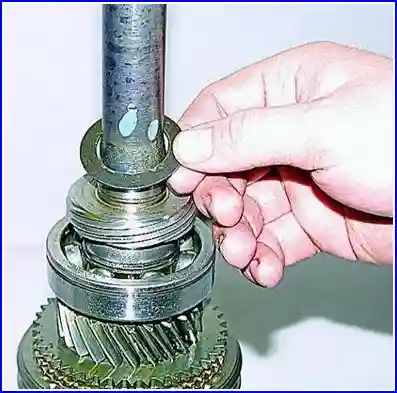
Prying off with a thin screwdriver, remove the retaining and spring rings

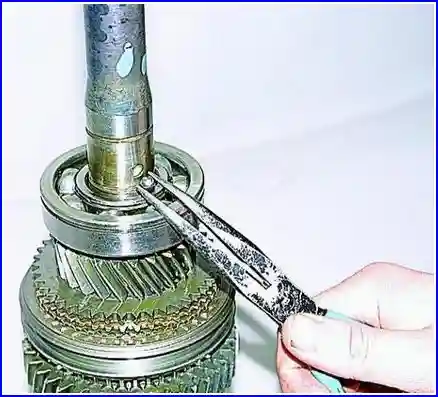
Remove the speedometer drive gear and take out its locking ball.
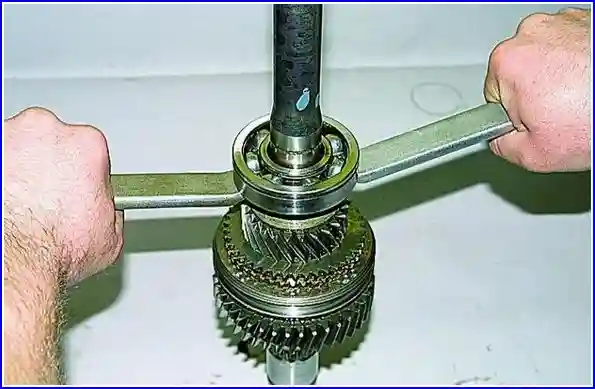
With two mounting blades or a special puller, remove the rear bearing of the secondary shaft
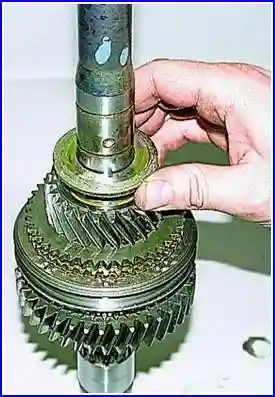
Remove the thrust washer.
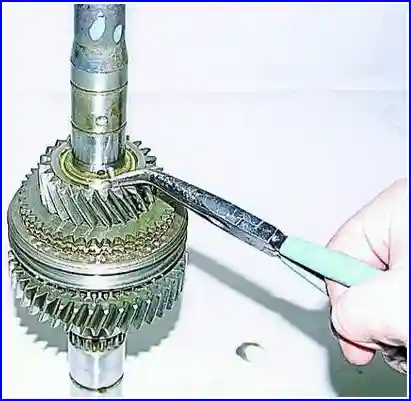
Remove the pin with pliers.
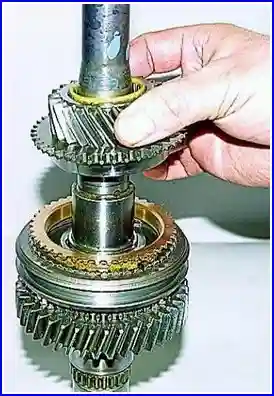
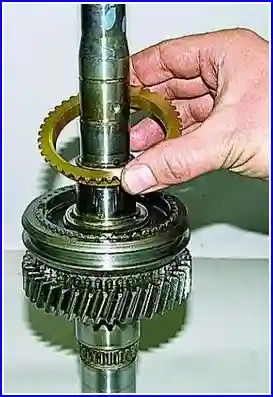
Remove the V gear with bearing and synchronizer
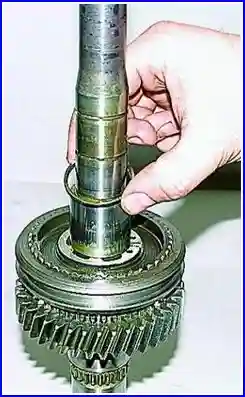
Remove the distance ring.
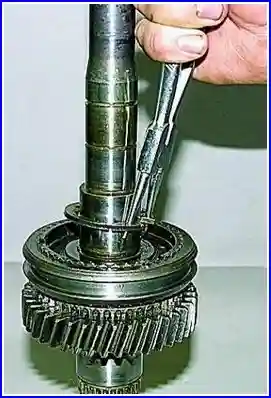
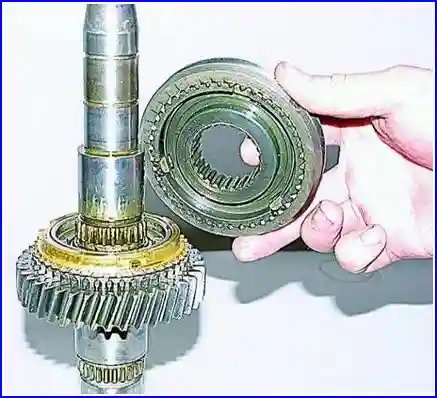
Using special pliers and screwdrivers, remove the spring ring and then the clutch for engaging V gear and reverse gear

Remove the synchronizer ring.
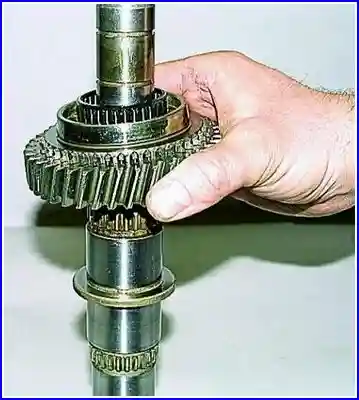
Remove the reverse gear with bearing
We remove two cuffs from the rear crankcase extension (information on the first page)
Before assembly, check the condition of the gearbox parts.
Cracks of any shape and length are not allowed on crankcase parts.
The bearing housings, shift rod holes, and the steel-babbit bushing of the rear crankcase extension must be smooth and free of nicks, nicks, or noticeable wear.
The bearings should fit into the sockets tightly, by hand force or by light tapping through the spacer.
Crankcase gaskets must be intact, without breaks, delaminations and breaks.
We check the shafts, axles and rods for the absence of cracks, noticeable signs of wear, scuffing and metal enveloping.
This also applies to the splined parts of the shafts, the mating parts should move easily on the shafts, without noticeable backlash and jamming.
Remove minor traces of scuffing, as well as possible corrosion (on splines), with a velvet file, very fine sandpaper, and polish the shaft necks with thin GOI paste or diamond paste.
On the teeth of gears and synchronizer couplings, chips, signs of seizing and chipping are not allowed, on the cones of synchronizers there should also be no signs of seizing, severe wear and enveloping of bronze on steel.
Ball and roller bearings must be in perfect condition.
Their rotation should be easy, without jamming, clicking, play and vibration.
Fatigue chipping (pitting), noticeable wear and chips are not allowed on the raceways, balls and rollers (needles).
The cages of ball bearings must not touch the rings, have cracks and breaks.
In general, after a run of about 100 thousand km, it is better to replace ball bearings, regardless of their condition.
We also replace the cuffs of the sliding fork of the propeller shaft and the cuff of the input shaft, regardless of their condition.
Before assembling, we thoroughly wash all parts in kerosene or diesel fuel, degrease the crankcase threaded holes with acetone or a solvent for nitro-paints.
We cover the rubbing surfaces of the gearshift mechanism, the steel-babbit bushing, cuffs and splines of the secondary shaft with SHRUS-4 grease, the rest with gear oil.
The bearings and their seats should also be lubricated with gear oil before assembly.
Assemble the box in reverse order.
To ensure the assembly of full complement bearings, their rollers are abundantly coated with any grease.
When assembling, we install all the shafts in the rear gearbox housing at the same time. To facilitate this operation, the shafts can be tied with a cord.
ATTENTION The thickness of the gasket between the gearbox housings determines the amount of axial clearance in the intermediate shaft bearings.
Therefore, setting pour it necessarily, lubricating for reliability with a thin layer of sealant.
Sealant should also be lubricated with all other cardboard gearbox gaskets.
The bolts connecting the crankcase parts should be degreased and the threads coated with sealant during assembly.
After installing the unit on the car, do not forget to fill the box with 1.2 liters of gear oil (to the level of the filler hole).









